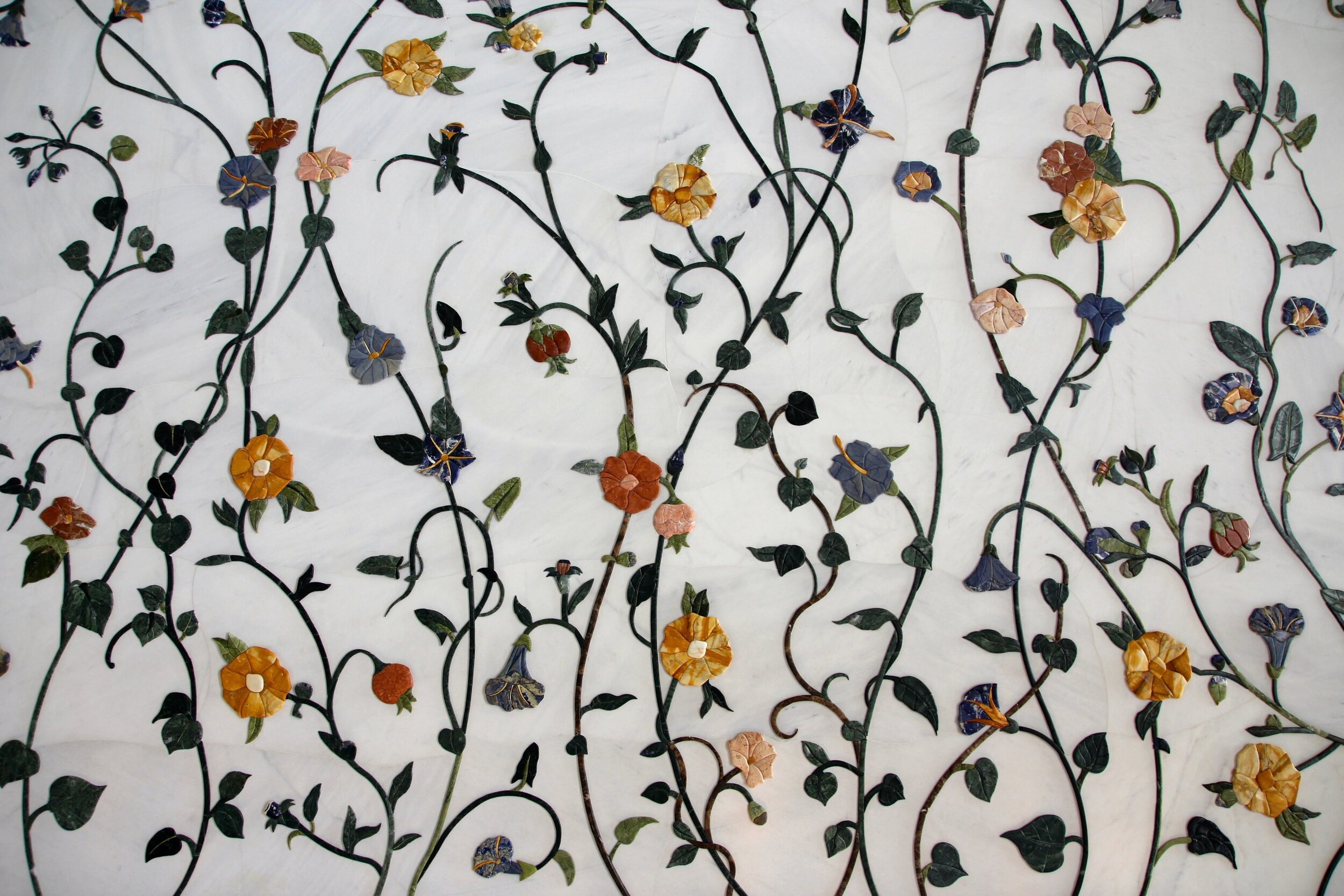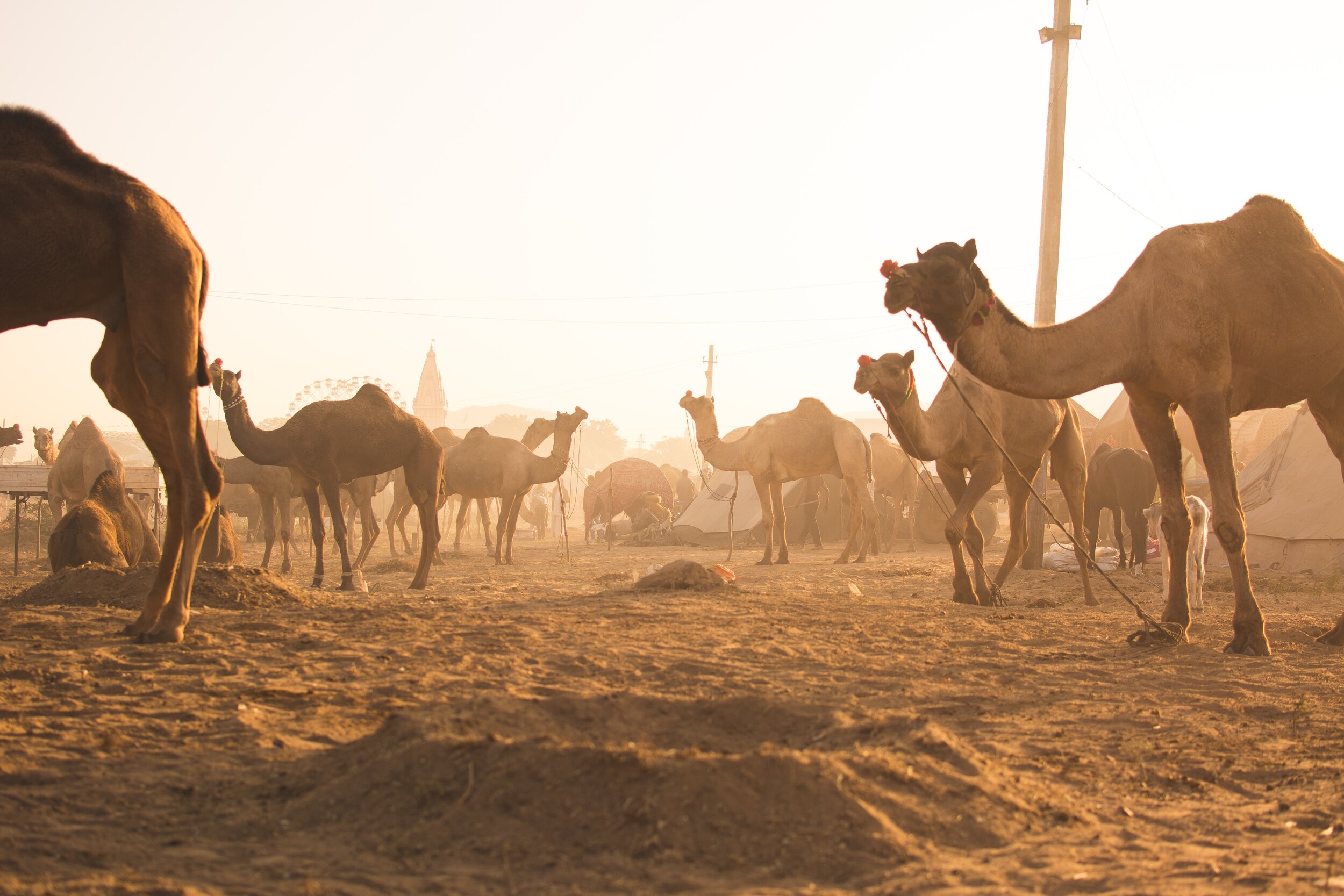
A Brief History of India
India as a political nation state is a very young country having received its independence from Imperial Britain in 1947. However, India has an ancient history that stretches back millennia. Below you will see a brief summary of Indian history as well as some resources for further study.
The Indus Valley Civilization (2500 BC)
The Indus Valley Civilization was located in what is now Pakistan and western India, along the Indus river valley. Nothing was known of this ancient civilization until the 1920s when archaeologists uncovered the ruins of Mohenjodaro and Harappa. These two cities showed a civilization that dated back to 2500 BC. The Indus Valley Civilization was an advanced people group that built well planned cities complete with wide roads and drainage systems. They were predominately farmers and traded with Mesopotamian civilizations in modern day Iraq. The Indus Valley Civilization was a contemporary of ancient Egypt, Mesopotamian and Chinese urban civilizations. How the Indus Valley Civilization came to an end is disputed. Some say it went into decline because of invaders but others say it was because of flooding and desertification.
The Vedic Period (1500-500 BC)
Following the decline of the Indus Valley Civilization there was a great migration into northern India of an Indo-European people group called the Aryans. They largely settled on the plains of the Yamuna and Ganges rivers and in modern Haryana and Punjab states. The time period is named after the Vedas; Sanskrit texts that formed the basis of much Hindu philosophy and beliefs. The four main Vedas are the Rigveda, Yajurveda, Samaveda and Atharvaveda. Over time the Aryan tribes coalesced into smaller kingdoms known as Janapadas. It was also during the Vedic Period that Gautama Buddha renounced Hinduism and began building his own religious community which became known as Buddhism.
The Nanda and Maurya Empires (300-180 BC)
The Janapadas of the Vedic Period merged and grew in power and influence. The largest kingdom to emerge was the Nanda Empire which stretched across northern India. It’s military was so large that when Alexander the Great invaded southern Asia in the 300s BC his army mutinied and refused to go any further when they encountered the size of the the Nandan forces. However, by the beginning of the 3rd century the Nanda dynasty had been overthrown by the Maurya Empire that grew out of modern day Bihar to cover the entire Indian subcontinent. The most famous ruler of the Maurya Empire was Ashoka the Great. After bloody rule and conquest, Ashoka turned to peaceful Buddhism and it spread all throughout south Asia.
Classical and Medieval India (200 BC-1500 AD)
Following the decline and splintering of the Maurya Empire, the Indian subcontinent was ruled by many different kingdoms, empires and dynasties all of varying sizes and lengths of years. Most notable was the Shunga Empire, the Kushan Empire, the Gupta Empire, as well as the three competing southern dynasties of the Cheras, Cholas and Pandyas. This era is sometimes referred to as the Golden Age of Hinduism because Hindu literature flourished and many of the philosophical systems of Hinduism emerged. India is dotted with many fantastic temples and other architectural feats from this period of great wealth, spiritual and scientific progress.
The Mughal Empire (1500-1700)
The Mughals are one of the most well known Indian Kingdoms. The Mughals were an Islamic central Asian people group that invaded the Indian subcontinent through Afghanistan and defeated the Delhi Sultanate and slowly expanded to rule much of India. It was a Mughal Emperor, Shah Jahan, that completed the Taj Mahal in Agra in 1643. By the 1700s the Mughal Empire was weakened beyond repair by their rivals the Maratha Empire as well as invasions from modern day Afghanistan and Iran.
The East India Trading Company (1600-1850)
Europeans had first reached India as early as the 1400 and 1500s. However, it was not until the 1600s that the East India Trading Company from Britain began to operate in India. This trading company slowly grew in power and influence just as the Mughal Empire was declining. The East India Trading company expanded and annexed more and more Indian kingdoms through economic and financial means, conquest with their private army of Indian Sepoys or by promising to protect Indian Kingdoms with their army in exchange for administrative powers in the Indian kingdoms. Through a series of wars the East India Trading company established themselves as the dominate European power in India. It was not until the Indian Mutiny in 1857 and the Company’s atrocities in response to the mutiny, that the British government formally took control of the East India Trading Company to establish the British Raj in 1858.
The British Raj (1850-1947)
The British Raj ruled most of India from the time of the Indian rebellion against the East India Trading Company until just after the Second World War when India gained its independence. The British invested much into education and infrastructure during the British Raj, however there is a debate as to whether India was wealthier before or after British rule. During this time period there was an Indian Renaissance of social and religious reformers, writers, scholars and thinkers; one of the most notable being Rabindranath Tagore who was Asia’s first Nobel Laureate. During the First and Second World Wars Indian soldiers fought for the Allies with great distinction in almost every theater of the wars.
The Indian Independence Movement
Indian nationalist movements had been going on since the early days of the British Raj, however it was just after the First World War when they started to pick up steam and become more unified. For example, in 1920 Mohandas Gandhi began his first non-cooperation movement in which Indians non-violently refused to cooperate with British rule by not paying taxes, boycotting British goods and quitting government jobs. Over the next 27 years, Gandhi, along with men such as Jawaharlal Nehru and Muhammad Jinnah, worked to secure Indian independence from the British and create a Muslim majority Pakistan and a Hindu majority India. Gandhi’s vision of a free and independent India was achieved on August 15th 1947. But tragically, large scale violence erupted across India and Pakistan between Muslims and Hindus during what was known as the Partition; when the two new countries formed. Another tragedy struck India when Mahatma Gandhi was assassinated in 1948.
Modern History (1947-Present)
Modern India is constitutional democratic republic and is made up of 29 states and 7 union territories. There are over a billion people in India making it the second largest country in the world by population. India has gone to war with Pakistan four times in 1947, 1965, 1971 and 1999. The Indian and Pakistani border is known as one of the most hostile borders in the world. In 1974 India became the worlds 6th nuclear power. India has grown into an industrial giant, a regional power and one of the fastest growing economies in the world and is currently a G20 member.
Resources for a deeper dive into Indian History
India: A History
By John Keay
The Discovery of India
By Jawaharlal Nehru
The Story of India
By Michael Wood
The Last Mughal
By William Dalrymple
India’s Ancient Past
By R.S. Sharma
India After Gandhi: The History of the World’s Largest Democracy
By Ramachandra Guha
**As an Amazon Associate, I earn from qualifying purchases.








